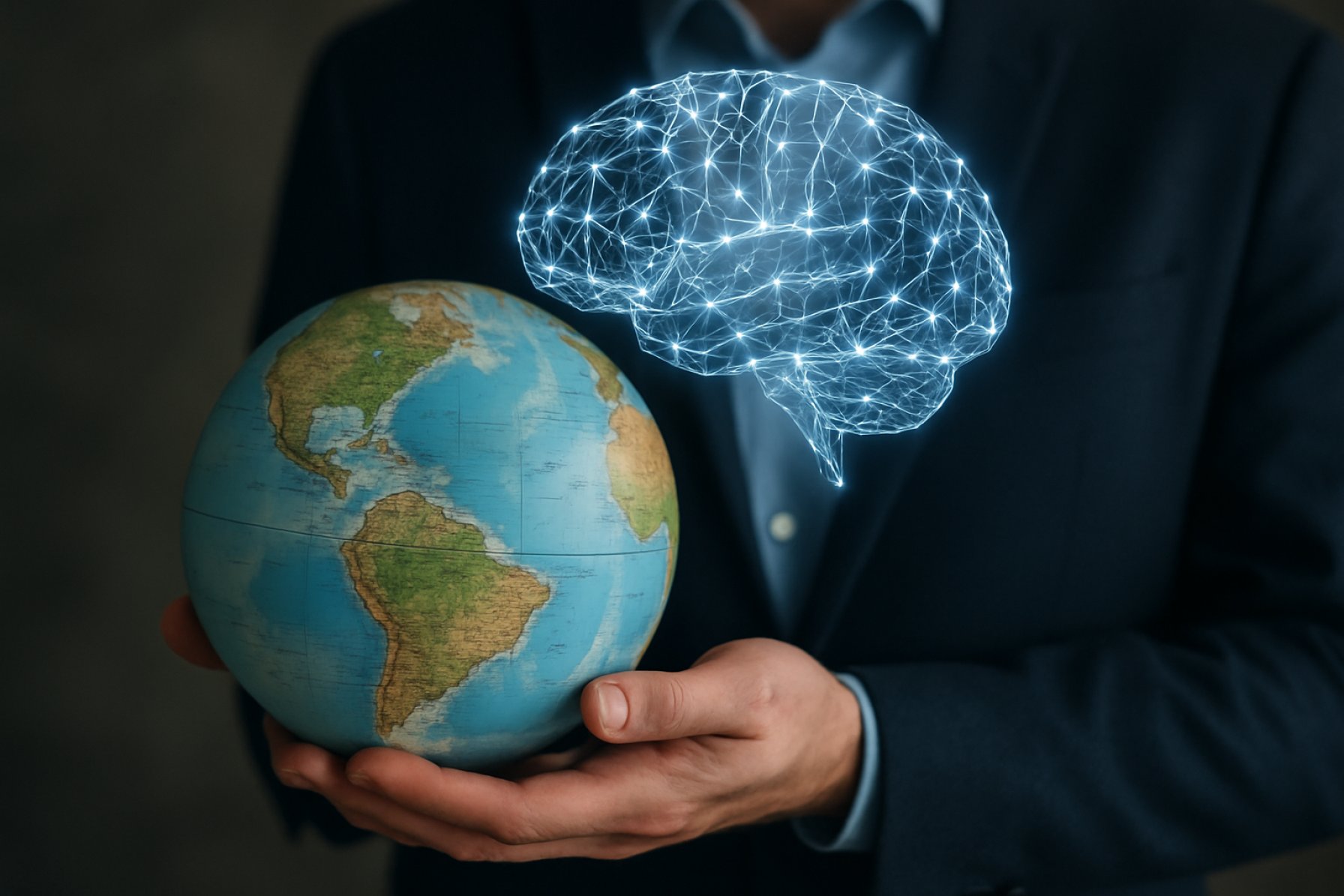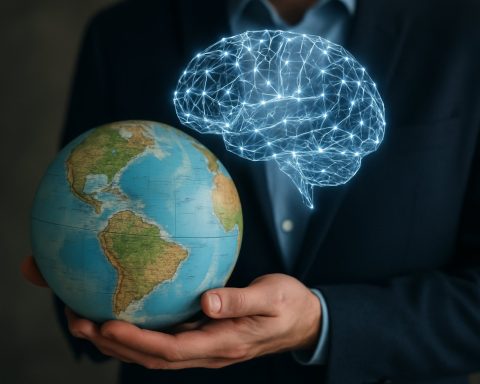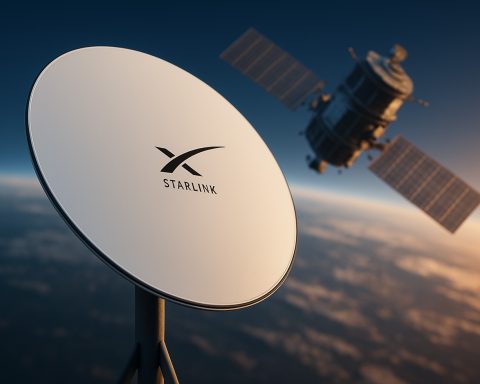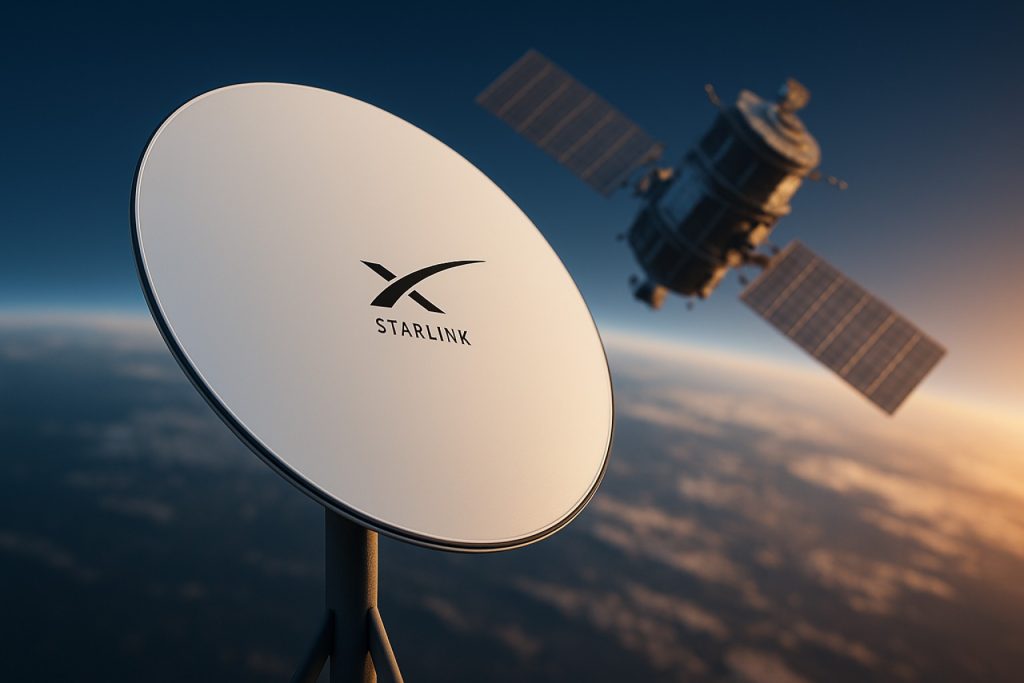Unveiling the Next Wave: How Artificial Intelligence is Reshaping Global Industries
- AI Market Landscape and Key Drivers
- Innovations and Breakthroughs in Artificial Intelligence
- Major Players and Shifting Competitive Dynamics
- Projected Expansion and Investment Hotspots
- Geographic Variations in AI Adoption
- Anticipated Developments and Strategic Implications
- Barriers to Progress and Areas for Advancement
- Sources & References
“Artificial Intelligence (AI) is entering an era of explosive growth and widespread adoption.” (source)
AI Market Landscape and Key Drivers
The global adoption of artificial intelligence (AI) is accelerating rapidly, with projections indicating a transformative impact across industries between 2025 and 2030. According to McKinsey, AI adoption rates among organizations have more than doubled since 2017, and this momentum is expected to intensify as generative AI and automation technologies mature.
- Market Growth: The global AI market is forecast to reach $826.7 billion by 2030, up from $241.8 billion in 2023, reflecting a compound annual growth rate (CAGR) of 21.6%. This surge is driven by increased investment in AI infrastructure, cloud computing, and data analytics.
- Regional Trends: North America and Asia-Pacific are leading in AI adoption, with Europe rapidly catching up. The International Data Corporation (IDC) projects that China will account for nearly 20% of global AI spending by 2026, while the U.S. remains the single largest market.
- Industry Penetration: Sectors such as healthcare, finance, manufacturing, and retail are at the forefront of AI integration. For example, Gartner predicts that by 2027, 80% of enterprises will have integrated AI into their business processes, up from 40% in 2023.
- Key Drivers: The main factors fueling AI adoption include the proliferation of big data, advances in machine learning algorithms, the rise of generative AI (such as large language models), and the need for automation to address labor shortages and improve efficiency.
- Challenges: Despite rapid growth, organizations face hurdles such as data privacy concerns, talent shortages, and the need for robust regulatory frameworks. Addressing these challenges will be critical to sustaining AI adoption momentum.
Looking ahead to 2030, AI is expected to be a foundational technology, reshaping business models, enhancing productivity, and driving innovation worldwide. Organizations that strategically invest in AI capabilities will be best positioned to capitalize on this transformative trend.
Innovations and Breakthroughs in Artificial Intelligence
The global adoption of artificial intelligence (AI) is poised for significant acceleration between 2025 and 2030, driven by technological advancements, increased investment, and expanding use cases across industries. According to a recent McKinsey report, over 50% of organizations worldwide had already integrated AI into at least one business function by 2023, and this figure is projected to surpass 80% by 2030.
Key trends shaping global AI adoption include:
- Enterprise Integration: AI is expected to become a core component of enterprise operations. A Gartner forecast predicts that by 2026, 80% of enterprises will have used generative AI APIs or models, up from less than 5% in 2023.
- Sectoral Expansion: While early adoption was concentrated in technology, finance, and retail, AI is rapidly expanding into healthcare, manufacturing, logistics, and public services. The global AI market is expected to reach $826.7 billion by 2030, with healthcare and manufacturing among the fastest-growing sectors.
- Regional Growth: North America and China currently lead in AI adoption, but Europe, India, and Southeast Asia are closing the gap through national AI strategies and increased R&D investment. The OECD AI Policy Observatory highlights a surge in AI policy initiatives and funding across more than 60 countries.
- Workforce Transformation: AI-driven automation is expected to impact up to 30% of global jobs by 2030, according to Goldman Sachs. This will necessitate large-scale reskilling and the emergence of new job categories.
- Ethics and Regulation: As adoption grows, so does the focus on responsible AI. The EU AI Act and similar frameworks are setting global precedents for ethical standards, transparency, and risk management.
In summary, the period from 2025 to 2030 will see AI become ubiquitous, with transformative impacts on business, society, and the global economy, underpinned by rapid innovation and evolving regulatory landscapes.
Major Players and Shifting Competitive Dynamics
The global landscape for artificial intelligence (AI) adoption is rapidly evolving, with major technology companies and emerging players shaping the competitive dynamics through innovation, investment, and strategic partnerships. Between 2025 and 2030, AI adoption is expected to accelerate across industries, driven by advancements in generative AI, automation, and data analytics.
- Major Players: The AI market continues to be dominated by tech giants such as Microsoft, Google (Alphabet), IBM, Amazon Web Services, and Meta. These companies are investing heavily in AI research, cloud-based AI services, and infrastructure, with Microsoft and Google leading in enterprise AI adoption through partnerships and product integrations (Gartner).
- Emerging Challengers: Startups and regional players are gaining traction, particularly in Asia and Europe. Companies like ByteDance (China), SenseTime (China), and DeepMind (UK, owned by Alphabet) are pushing the boundaries in AI applications for content creation, autonomous vehicles, and healthcare.
- Shifting Dynamics: The competitive landscape is shifting as open-source AI models and platforms gain popularity, lowering barriers to entry for smaller firms and fostering innovation. The rise of sovereign AI initiatives in the EU and Asia is also challenging US dominance, with governments investing in local AI ecosystems to ensure data sovereignty and technological independence (McKinsey).
- Adoption Trends: According to Statista, global AI adoption rates are projected to reach 60% by 2030, up from 35% in 2023. Sectors such as healthcare, finance, manufacturing, and retail are leading in AI integration, with generative AI expected to account for over $1.3 trillion in business value by 2030 (Gartner).
In summary, the period from 2025 to 2030 will see intensified competition among established tech leaders and agile newcomers, with regional strategies and open-source innovation reshaping the global AI adoption landscape.
Projected Expansion and Investment Hotspots
Between 2025 and 2030, global AI adoption is expected to accelerate rapidly, driven by technological advancements, increased investment, and expanding use cases across industries. According to McKinsey, AI adoption rates among businesses worldwide reached 50% in 2023, and this figure is projected to surpass 70% by 2027 as generative AI and automation become mainstream. The global AI market size, valued at approximately $196 billion in 2023, is forecasted to grow at a CAGR of 37.3%, reaching over $1.8 trillion by 2030 (Grand View Research).
Key investment hotspots are emerging as governments and private sectors ramp up funding to secure leadership in AI innovation. The United States remains at the forefront, with the Biden administration committing over $2 billion in new AI research and infrastructure initiatives. China is also intensifying its efforts, aiming to become the world leader in AI by 2030, supported by significant state-backed investments and a robust startup ecosystem (South China Morning Post).
Europe is positioning itself as a regulatory and ethical leader, with the EU AI Act setting the framework for responsible AI deployment. The region is also seeing increased venture capital activity, particularly in the UK, Germany, and France. Meanwhile, countries like India, Singapore, and the UAE are emerging as regional AI hubs, leveraging government incentives and a growing talent pool to attract global investment (World Economic Forum).
- Healthcare: AI-driven diagnostics and personalized medicine are expected to see the highest adoption rates, with the global AI healthcare market projected to reach $188 billion by 2030 (Precedence Research).
- Manufacturing: Smart automation and predictive maintenance will drive AI investment, especially in Asia-Pacific and North America.
- Financial Services: AI-powered risk assessment and fraud detection are key growth areas, with major banks increasing AI budgets by 20–30% annually (Deloitte).
In summary, the next five years will see intensified global competition, with North America, China, and select Asian and European markets emerging as primary investment hotspots for AI expansion.
Geographic Variations in AI Adoption
Global AI adoption is expected to accelerate significantly between 2025 and 2030, with notable geographic variations driven by economic priorities, regulatory environments, and technological infrastructure. According to McKinsey, AI adoption rates have already reached 50% among surveyed organizations worldwide in 2023, and this figure is projected to rise sharply as generative AI and automation technologies mature.
- North America: The United States and Canada are poised to maintain leadership in AI innovation and deployment, fueled by robust investment, a strong startup ecosystem, and leading research institutions. The U.S. AI market alone is forecast to reach $299.6 billion by 2026 (Statista). Regulatory clarity and public-private partnerships are expected to further accelerate enterprise adoption.
- Europe: The European Union is focusing on ethical AI and regulatory frameworks, such as the EU AI Act, which may slow initial adoption but is likely to foster long-term trust and sustainable growth. By 2030, Europe’s AI market is projected to reach $190 billion, with Germany, France, and the UK leading regional adoption (IDC).
- Asia-Pacific: China is rapidly closing the gap with the U.S., aiming to become the global AI leader by 2030. The Chinese government’s strategic investments and data-rich environment are driving widespread adoption across sectors. Japan, South Korea, and India are also scaling up AI integration, particularly in manufacturing and services. The Asia-Pacific AI market is expected to surpass $200 billion by 2030 (Mordor Intelligence).
- Rest of the World: Latin America, the Middle East, and Africa are experiencing steady but slower AI adoption, primarily due to infrastructure and skills gaps. However, targeted investments and international collaborations are expected to boost adoption rates, especially in sectors like fintech, agriculture, and healthcare (Deloitte).
In summary, while North America and Asia-Pacific are set to dominate global AI adoption through 2030, Europe’s regulatory approach and emerging markets’ targeted strategies will shape a diverse and dynamic global AI landscape.
Anticipated Developments and Strategic Implications
Between 2025 and 2030, global AI adoption is expected to accelerate significantly, driven by advances in generative AI, increased investment, and expanding regulatory frameworks. According to McKinsey, as of 2023, 55% of organizations had adopted AI in at least one business function, a figure projected to surpass 75% by 2025 as AI becomes more accessible and integral to business operations.
Regionally, North America and China are anticipated to remain leaders in AI adoption, with the European Union closing the gap due to its robust regulatory initiatives and investment in digital infrastructure. The global AI market is forecast to reach $826.7 billion by 2030, up from $241.8 billion in 2023, reflecting a compound annual growth rate (CAGR) of 21.6% (Statista).
- Sectoral Expansion: AI adoption will deepen in sectors such as healthcare, finance, manufacturing, and retail. For example, the healthcare AI market alone is expected to grow to $188 billion by 2030 (Precedence Research), driven by diagnostic tools, personalized medicine, and operational automation.
- Workforce Transformation: The World Economic Forum projects that AI will create 97 million new jobs globally by 2025, even as it automates 85 million existing roles (WEF). This shift will necessitate large-scale reskilling and upskilling initiatives.
- Regulatory Evolution: The EU’s AI Act, expected to be fully implemented by 2026, will set global precedents for responsible AI deployment, influencing regulatory approaches in other regions (AI Act).
Strategically, organizations will need to balance rapid AI integration with ethical considerations, data privacy, and compliance. Early adopters are likely to gain competitive advantages through improved efficiency, innovation, and customer engagement. However, laggards risk falling behind as AI-driven disruption reshapes industry landscapes. Proactive investment in AI talent, infrastructure, and governance will be critical for sustained success in the coming decade.
Barriers to Progress and Areas for Advancement
As artificial intelligence (AI) continues to reshape industries worldwide, the period from 2025 to 2030 is expected to see accelerated adoption across sectors. However, several barriers persist, and targeted advancements are necessary to unlock AI’s full potential globally.
-
Barriers to Progress
- Data Privacy and Security: Concerns over data misuse and regulatory compliance remain significant hurdles. The introduction of stricter data protection laws, such as the EU’s AI Act, is prompting organizations to reassess their data strategies, often slowing AI deployment.
- Talent Shortage: The global demand for AI specialists far outpaces supply. According to the World Economic Forum, 75% of companies cite skills gaps as a primary barrier to AI adoption.
- Infrastructure Disparities: Many developing regions lack the necessary digital infrastructure, such as high-speed internet and cloud computing resources, to support advanced AI applications (ITU).
- Ethical and Societal Concerns: Issues around algorithmic bias, transparency, and job displacement continue to generate public skepticism and regulatory scrutiny (OECD AI Principles).
-
Areas for Advancement
- Responsible AI Frameworks: The development and adoption of global standards for ethical AI, such as those promoted by the ISO/IEC JTC 1/SC 42, will be crucial for building trust and ensuring safe deployment.
- Upskilling and Education: Investment in AI education and reskilling programs is essential. Initiatives like Elements of AI are helping to democratize AI knowledge and close the talent gap.
- Infrastructure Investment: Expanding access to cloud computing and 5G networks, particularly in emerging markets, will be key to enabling widespread AI adoption (GSMA Mobile Economy).
- Cross-Border Collaboration: International cooperation on AI research, regulation, and best practices can accelerate innovation while addressing shared challenges (Global Partnership on AI).
Addressing these barriers and advancing in these key areas will be critical for realizing the transformative potential of AI on a global scale between 2025 and 2030.
Sources & References
- Global AI Adoption Trends (2025–2030)
- McKinsey
- Statista
- IDC
- Goldman Sachs
- AI Act
- Microsoft
- IBM
- Amazon Web Services
- Meta
- ByteDance
- SenseTime
- DeepMind
- Grand View Research
- Biden administration
- South China Morning Post
- AI Act
- Precedence Research
- Deloitte
- Mordor Intelligence
- ITU
- ISO/IEC JTC 1/SC 42
- Elements of AI











